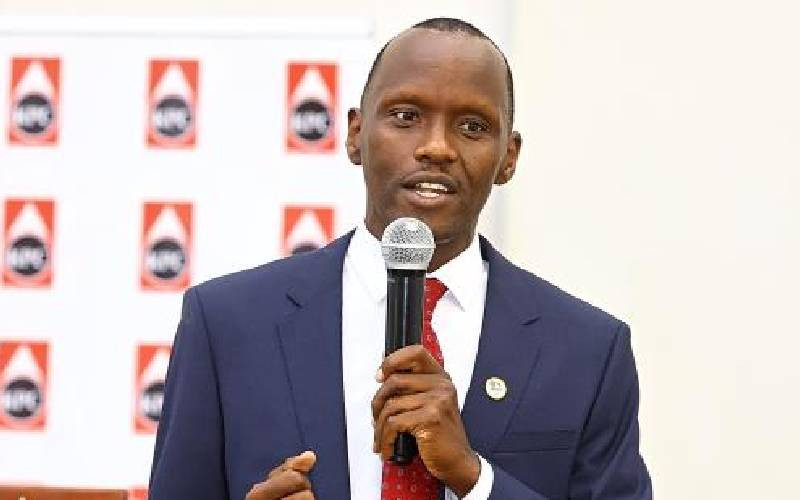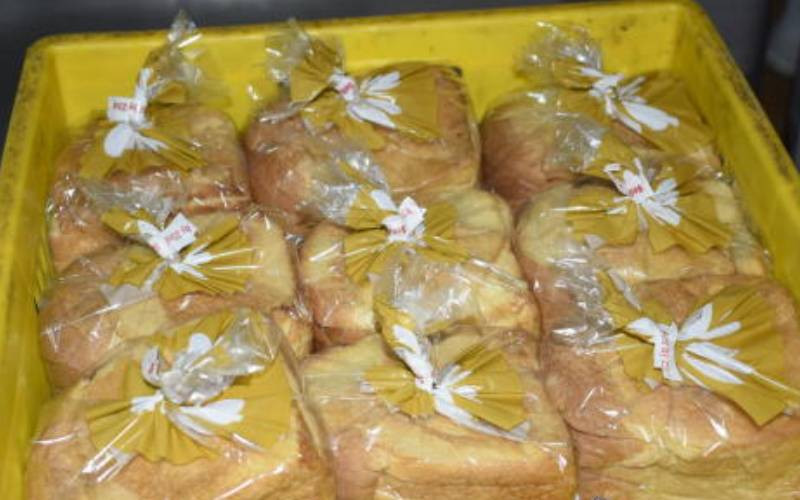By JEVANS NYABIAGE
Over Sh23 billion is lying idle in the counties, raising questions over the ability of the counties to absorb the funds, a Treasury report reveals.
The amount represents 70.05 per cent of Sh32.8 billion that the National Treasury has disbursed as at September 18. So far, counties have spent only Sh9 billion.
Top on the list of counties that have been unable to spend most of the funds allocated so far during the first quarter of this financial year (July to September) are Nyamira, Siaya, Tharaka Nithi, Nairobi, Mandera, Lamu, Kwale, Kitui, Isiolo, Embu, Elgeyo/ Marakwet and Baringo counties.
All the 47 counties had cumulatively spent only 30 per cent of the funds allocated, even as Treasury raised concerns over the unspent money. Cabinet Secretary Henry Rotich said Treasury had borrowed some of the resources now “lying idle at various County Revenue Funds” and warned that Kenyans were paying interest on “unutilised borrowed funds”.
This comes at a time when total public debt nears the Sh2 trillion mark, piling misery on taxpayers in servicing debt.
During the week ending September 27, 2013, the government spent Sh21.6 billion as interest and other charges on domestic debt.
According to the audit published in the local dailies yesterday, Nyamira County spent Sh1.9 million out of Sh516 million released from Treasury, leaving 96.62 per cent in the bank. Mandera County spent only Sh4.3 million of the total Sh1.1 billion allocated as at September 18.
Low spender
Another low spender is Siaya County, which spent Sh7.7 million out of the allocated Sh621 million.
With a total allocation of Sh255 million, Lamu County spent only Sh6.9 million while out of Sh406 million that had been given to Elgeyo/Marakwet, the county spent only Sh2.5 million.
According to the Treasury, among the heavy spenders are Bungoma, which spent 50 per cent of its allocation, Busia (50 per cent) Garissa (34 per cent), Homa Bay (49 per cent), Kakamega (49 per cent), Kisii (37 per cent), Migori (48 per cent) and Nakuru (42 per cent) counties.
Bungoma, which had been given Sh1 billion, spent Sh521 million while Busia County spent Sh290 million out of the Sh580 million allocated. Bungoma County Governor Kenneth Lusaka said most of the allocations went to recurrent expenditure and operations.
“We paid salaries for the three months we have been in office,” Lusaka said, adding that Sh55 million was transferred to the county assembly for operations.
Another Sh20 million was spent on recurrent expenditure while Sh232 million was channelled to the operations account. Other high spenders are Garissa, which gobbled Sh223 million out of Sh748.9 million and Homa Bay, which spent Sh342 million out of Sh700 million.
Stay informed. Subscribe to our newsletter
Kisii County spent Sh234 million out of Sh917m, Kakamega Sh516m out of Sh1.16 billion, Migori Sh349 million out of Sh725 million and Nakuru Sh365 million out of Sh1.1 billion allocated.
Treasury said some counties such as Baringo, Elgeyo/Marakwet, Embu, Kajiado, Kitui, Kwale, Lamu, Makueni, Mandera, Meru and Mombasa have accumulated more deposits in the County Revenue Fund over and above the equitable share of the national revenue transferred to the specific county.
However, some governors dismissed the audit report, saying it was a political gimmick designed to undercut their influence.
Siaya acting Governor George Okode dismissed the audit as inaccurate. “This is not the picture on the ground. We neither have the cash nor operate the CBK account,” Okode said.
Elgeyo/Marakwet Governor Alex Tolgos said claims by the government that counties were not utilising funds disbursed to them were calculated to wedge a rift between county leadership and voters.
He said the amounts stated in a press advertisement as unused were in fact monies the county governments owe the national government in salaries.
“The national government assisted us in offsetting employee salaries for all devolved functions like in agriculture and co-operatives and health and are yet to invoice us to effect repayment,” Tolgos said, sentiments that Rotich is in agreement with.
Rotich attributed the low spending on the move by the national government to continue paying salaries for some of the employees that were transferred to counties.
“We have given them up to December to put their payrolls in order. This means they will have to refund some of the money we have spent to pay for salaries,” Rotich said.
Some counties have also disputed the published figures as “cooked up”. For instance, the Nyeri county executive for Finance and Economic Planning, Martin Wamwea, said they only received Sh276 million and another Sh32 million for the county’s Level Five hospitals and not the Sh618 million published by Treasury.
“If there are any other monies they have withdrawn from the Consolidated Fund intended for County Revenue Funds, they are not in our operational accounts and cannot be called our money,” said Wamwea.
There are growing concerns over the low absorption of development funds by both the national and county governments. The Office of the Controller of Budget recently revealed that various ministries and departments failed to spend a massive Sh339.6 billion allocated to them during the financial year ended June 30, 2013.
Surprisingly, this amount is Sh75 billion more than what was left unspent in the previous financial year. Of the revised budget, estimates of Sh1.15 trillion for the 2012/2013 financial year, only Sh814.7 billion was spent, despite increased budgetary allocations to development expenditure.
“The National Treasury urges all counties to ensure timely absorption of funds while complying with Article 201 of the Constitution, which states that public money shall be used in a prudent and responsible way,” said Rotich.
 The Standard Group Plc is a
multi-media organization with investments in media platforms spanning newspaper
print operations, television, radio broadcasting, digital and online services. The
Standard Group is recognized as a leading multi-media house in Kenya with a key
influence in matters of national and international interest.
The Standard Group Plc is a
multi-media organization with investments in media platforms spanning newspaper
print operations, television, radio broadcasting, digital and online services. The
Standard Group is recognized as a leading multi-media house in Kenya with a key
influence in matters of national and international interest.
 The Standard Group Plc is a
multi-media organization with investments in media platforms spanning newspaper
print operations, television, radio broadcasting, digital and online services. The
Standard Group is recognized as a leading multi-media house in Kenya with a key
influence in matters of national and international interest.
The Standard Group Plc is a
multi-media organization with investments in media platforms spanning newspaper
print operations, television, radio broadcasting, digital and online services. The
Standard Group is recognized as a leading multi-media house in Kenya with a key
influence in matters of national and international interest.










